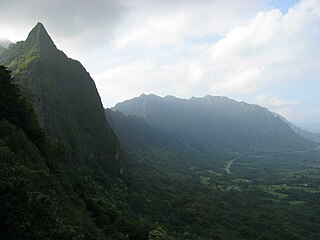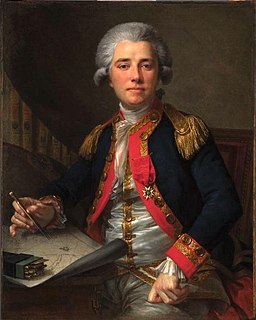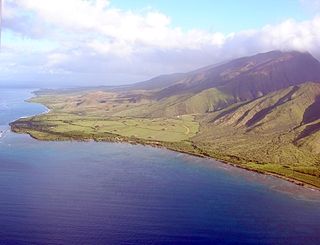 W
WAncient Hawaiʻi is the period of Hawaiian human history preceding the unification in 1810 of the Kingdom of Hawaiʻi by Kamehameha the Great. Traditionally researchers estimated the first settlement of the Hawaiian islands by Polynesian long-distance navigators from French Polynesia, Tahiti, the Tuamotus and the Samoan Islands as having occurred sporadically between 300 and 800 CE. In 2010, a study was published based on radiocarbon dating of more reliable samples which suggests that the islands were settled much later, within a short timeframe, in about 1219 to 1266.
 W
WAhupuaʻa is a Hawaiian term for a large traditional socioeconomic, geologic, and climatic subdivision of land.
 W
WThe Battle of Kepaniwai was fought in 1790 between Hawaiʻi Island and Maui. The forces of Hawaiʻi were led by Kamehameha I, while the forces of Maui were led by Kalanikūpule. It is known as one of the most bitter battles fought in Hawaiian history.
 W
WThe Battle of Nuʻuanu, fought in May 1795 on the southern part of the island of Oʻahu, was a key battle in the final days of King Kamehameha I's wars to unify the Hawaiian Islands. It is known in the Hawaiian language as Kalelekaʻanae, which means "the leaping mullet", and refers to a number of Oʻahu warriors driven off the cliff in the final phase of the battle. There are "varied and sometimes conflicting histories of the Battle of Nuʻuanu."
 W
WKaʻūpūlehu is the site of a historic settlement on the west coast of Hawaiʻi island, the largest of the Hawaiian Islands. Devastated by a lava flow, the area is now the home of luxury hotels such as the Four Seasons Resort Hualalai.
 W
WThe 1790 Footprints refer to a set of footprints found near the Kīlauea volcano in present-day Hawaii Volcanoes National Park on the island of Hawaiʻi. Resulting from an unusually explosive eruption, they may be associated with a series of battles in the area in 1790.
 W
WCaptain James Cook's 1779 attempted kidnapping of Kalaniʻōpuʻu, the ruling chief of the island of Hawaii and the decision to hold him in exchange for a stolen long boat (lifeboat) was the fatal error of Cook's final voyage, and ultimately led to his death.
 W
WJean François de Galaup, comte de Lapérouse was a French Naval officer and explorer whose expedition vanished in Oceania.
 W
WAhupuaʻa is a Hawaiian term for a large traditional socioeconomic, geologic, and climatic subdivision of land.
 W
WThe Battle of Mokuʻōhai, fought in 1782 on the island of Hawaiʻi, was a key battle in the early days of Kamehameha I's wars to conquer the Hawaiian Islands. It was his first major victory, solidifying his leadership over much of the island.
 W
WOlowalu is a community on the west side of the island of Maui in the state of Hawaii. It is located about 4 miles (6.4 km) south of Lahaina on the Honoapiʻilani Highway.
 W
WTraditional Polynesian navigation was used for thousands of years to make long voyages across thousands of kilometres of the open Pacific Ocean. Navigators travelled to small inhabited islands using wayfinding techniques and knowledge passed by oral tradition from master to apprentice, often in the form of song. Generally, each island maintained a guild of navigators who had very high status; in times of famine or difficulty, they could trade for aid or evacuate people to neighbouring islands. As of 2014, these traditional navigation methods are still taught in the Polynesian outlier of Taumako in the Solomons.